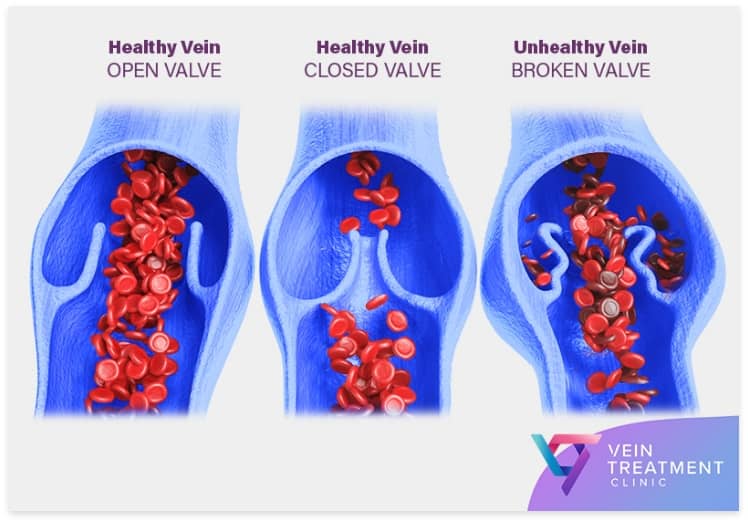In healthcare, technological advancements have been pivotal in enhancing diagnostic and treatment capabilities.
One groundbreaking development is integrating artificial intelligence (AI) into medical imaging. This fusion of cutting-edge technology with healthcare practices is transforming the landscape of clinical routine, offering unprecedented insights and efficiency.
In this article, we will delve into the profound impact of AI in medical imaging and explore its role as a powerful tool in the day-to-day operations of healthcare professionals.
The Evolution of Medical Imaging
Medical imaging has evolved significantly over the years, playing a crucial role in diagnosing and monitoring various medical conditions.
Traditional imaging techniques such as X-rays, CT scans, and MRIs have been fundamental in visualizing internal structures, aiding physicians in making informed decisions about patient care. However, the increasing complexity of healthcare data and the need for faster and more accurate diagnoses have led to the integration of AI in medical imaging.
How AI is Revolutionizing Medical Imaging
Enhanced Diagnostic Accuracy
AI algorithms and intense learning models have demonstrated exceptional capabilities in analyzing medical images with precision unmatched by traditional methods. These algorithms can detect subtle patterns and abnormalities that may go unnoticed by the human eye. This heightened accuracy translates into early and more reliable diagnoses, enabling timely interventions and improved patient outcomes.
Efficient Workflow and Time Savings
In the realm of clinical routine, time is often of the essence. AI in medical imaging streamlines the workflow by automating routine tasks, allowing healthcare professionals to focus more on patient care and less on manual data analysis. Tasks such as image segmentation, feature extraction, and pattern recognition are executed swiftly, reducing the time spent on diagnosis and increasing the overall efficiency of medical practices.
Personalized Treatment Plans
When integrated with medical imaging, AI algorithms can analyze vast datasets to identify individualized treatment options. This personalized approach considers a patient’s unique characteristics, genetic makeup, and medical history, enabling healthcare providers to tailor treatment plans precisely. This enhances the efficacy of treatments and minimizes adverse effects, contributing to a more patient-centric healthcare system.
Predictive Analytics for Early Intervention
One of the most promising aspects of AI in medical imaging is its ability to predict disease progression and potential complications. By analyzing historical patient data and correlating it with outcomes, AI algorithms can identify subtle indicators that precede the manifestation of certain conditions. This allows for early intervention and preventive measures, ultimately reducing the burden on healthcare systems and improving long-term patient outcomes.
Specific Cybersecurity Measures for Safeguarding Patient Information
Encryption of Patient Data
One of the fundamental cybersecurity measures that healthcare providers must implement is the encryption of patient data. Encryption transforms sensitive information into unreadable code that can only be deciphered with the appropriate key. This ensures that even if unauthorized parties gain access to the data, they cannot make sense of it without the encryption key. Utilizing robust encryption algorithms for both data at rest and in transit is crucial for maintaining the confidentiality and integrity of patient information.
Access Control and Identity Management
Role-Based Access Control (RBAC)
Implementing role-based access control (RBAC) is essential in preventing unauthorized access to patient data. RBAC assigns specific roles and permissions to individuals based on their responsibilities within the healthcare organization. This ensures that only authorized personnel can access certain patient information, minimizing the risk of data breaches. Regularly reviewing and updating access privileges by staff roles and responsibilities is crucial to maintaining a secure access control system.
Multi-Factor Authentication (MFA)
Healthcare providers should incorporate multi-factor authentication (MFA) mechanisms to fortify access control. MFA requires users to provide multiple forms of identification before granting access, typically combining something they know (password), something they have (security token), or something they are (biometric verification). This additional layer of authentication significantly enhances the security of patient data by making it more challenging for unauthorized users to gain access, even if passwords are compromised.
Robust Network Security Measures
Firewalls and Intrusion Detection Systems (IDS)
Deploying firewalls and intrusion detection systems (IDS) is crucial for safeguarding the healthcare network infrastructure. Firewalls are a barrier between the internal network and external threats, while IDS monitors network traffic for suspicious activities. Together, these measures help prevent unauthorized access, detect potential security breaches, and promptly respond to any malicious actions, ensuring the integrity and confidentiality of patient data.
Virtual Private Networks (VPNs)
Healthcare providers should utilize virtual private networks (VPNs) to secure communication channels within their networks. VPNs encrypt data transmitted between different locations or devices, making it highly challenging for cyber criminals to intercept or manipulate the information. Implementing VPNs enhances the privacy of patient data during its transmission over the network, especially when healthcare professionals access patient records remotely.
Regular Security Audits and Training Programs
Security Audits
Regular security audits are essential for identifying vulnerabilities in the healthcare system’s infrastructure and applications. These audits assess the effectiveness of existing cybersecurity measures, identify potential weaknesses, and help healthcare providers proactively address security concerns. Regular assessments ensure compliance with industry regulations and standards, providing a comprehensive view of the organization’s cybersecurity posture.
Employee Training and Awareness Programs
Human error is standard in cybersecurity incidents, making employee training and awareness programs crucial. Healthcare providers should educate their staff on best practices for data security, the importance of strong passwords, and the potential risks associated with phishing attacks. Creating a cybersecurity-aware culture within the organization empowers employees to be vigilant and proactive in safeguarding patient information.
Challenges and Considerations
While the integration of AI in medical imaging holds immense promise, it has its challenges and ethical considerations.
Data Security and Privacy Concerns
The reliance on large datasets for training AI models raises concerns about the security and privacy of patient information. Healthcare providers must implement robust cybersecurity measures to safeguard sensitive data and ensure compliance with regulations such as the Health Insurance Portability and Accountability Act (HIPAA).
Interpretability and Explainability
The “black box” nature of some AI algorithms poses challenges regarding interpretability and explainability. Healthcare professionals may only trust AI recommendations fully if they understand how decisions are reached. Addressing this issue is crucial for fostering trust and acceptance within the medical community.
Integration with Clinical Workflow
The seamless integration of AI into clinical workflows is essential for effective implementation. Healthcare professionals should be provided with user-friendly interfaces and training to maximize the benefits of AI without disrupting established practices.
Real-world Applications and Success Stories
Radiology and Imaging Analysis
Radiology has been at the forefront of incorporating AI in medical imaging. AI algorithms have shown remarkable accuracy in detecting abnormalities in X-rays, CT scans, and MRIs. For instance, in detecting early-stage lung cancer from chest X-rays, AI models have demonstrated sensitivity and specificity comparable to experienced radiologists.
Pathology and Histopathology
Beyond traditional imaging, AI has made significant strides in pathology and histopathology. Automated image analysis using AI can assist pathologists in identifying subtle changes in tissue samples, leading to more accurate and efficient diagnoses of diseases such as cancer.
Cardiac Imaging and Functional Analysis
In cardiology, AI has proven instrumental in analyzing cardiac imaging data. From identifying subtle changes in myocardial function to predicting cardiovascular events, AI contributes to more precise risk stratification and tailored treatment plans for cardiac patients.
Future Directions and Possibilities
As AI in medical imaging continues to evolve, the possibilities for its application are vast and transformative.
Integration with Electronic Health Records (EHRs)
The seamless integration of AI into electronic health records can enhance the accessibility and utilization of medical imaging data. This integration gives healthcare providers a comprehensive view of a patient’s medical history, facilitating more informed decision-making.
Remote Diagnostics and Telemedicine
AI in medical imaging can extend its benefits beyond traditional healthcare settings. Remote diagnostics powered by AI enables healthcare professionals to analyze medical images and provide consultations from a distance, improving accessibility to medical expertise, especially in underserved or remote areas.
Conclusion
In conclusion, integrating artificial intelligence in medical imaging is undeniably a transformative tool for clinical routine. From enhancing diagnostic accuracy to streamlining workflows and enabling personalized treatment plans, AI brings a new dimension to medicine. While challenges exist, ongoing research and technological advancements will address these issues and optimize the synergy between AI and medical imaging. As we look toward the future, the role of AI in healthcare is poised to expand, heralding a new era of precision medicine and improved patient care.
Medical Billing Services: A Seamless Financial Component
In the dynamic healthcare landscape, the role of medical billing services in Houston must be considered. As AI revolutionizes medical imaging, it also impacts the financial aspects of healthcare delivery.
Efficient medical billing services in Houston, powered by AI algorithms, contribute to streamlined revenue cycles, reduced errors, and improved economic outcomes for healthcare providers.
The synergy between AI in medical imaging and medical billing services in Houston represents a holistic approach to enhancing patient care and the overall efficiency of healthcare systems.




